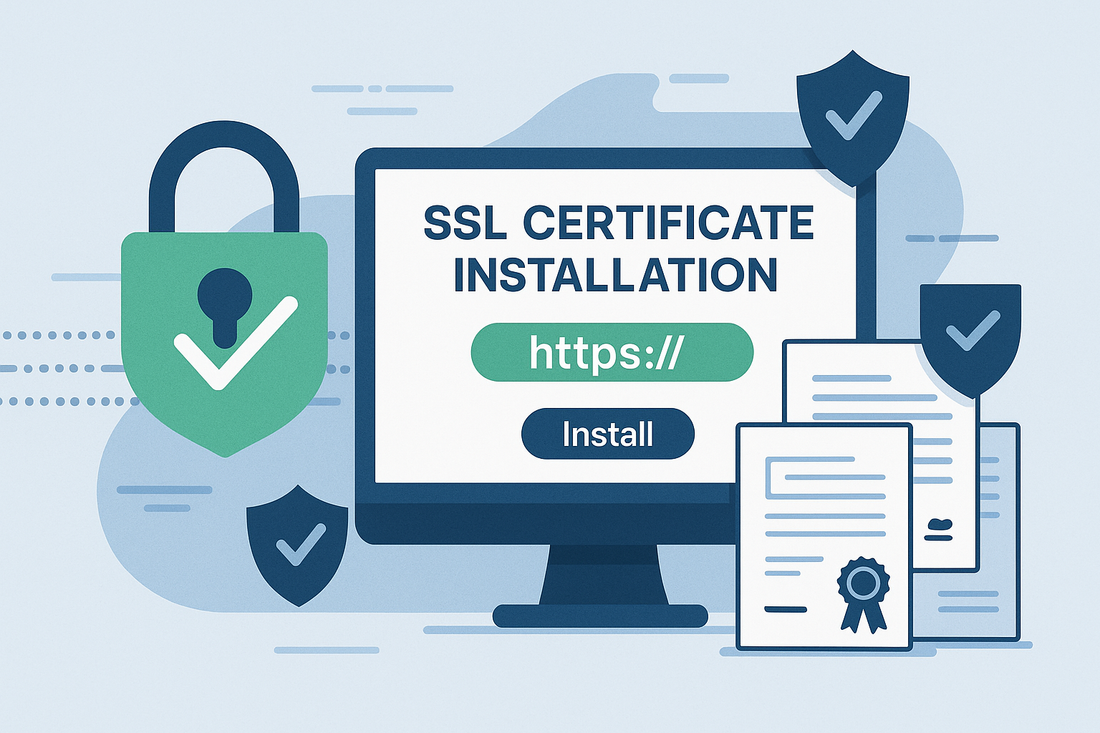
How Do I Install a Certificate?
Marcus KennedyShare
Installing SSL Certificates is a crucial step in securing your web presence, and understanding the proper installation process ensures optimal security implementation.
Trustico® provides comprehensive support for SSL Certificate installation across multiple platforms and server environments, helping organizations maintain robust encryption standards.
Understanding SSL Certificate Installation Basics
The SSL Certificate installation process begins with generating a Certificate Signing Request (CSR) on your web server. This critical first step creates a private key and public SSL Certificate request that must be submitted to the Certificate Authority (CA) for validation and signing.
Before proceeding with installation, system administrators should verify they have received all necessary SSL Certificate files from their CA. A complete SSL Certificate package typically includes the primary SSL Certificate, intermediate SSL Certificates, and root SSL Certificates that form the complete chain of trust.
Server administrators must ensure proper file permissions and directory access before attempting installation. The private key generated during the CSR process must remain secure and protected, as it forms the foundation of the SSL Certificate security structure.
Web Server Installation Considerations
Different web servers require specific approaches to SSL Certificate installation. Apache servers utilize configuration files where SSL Certificate paths must be explicitly defined, while nginx implementations require particular attention to SSL Certificate chain order and file locations.
Microsoft IIS environments provide a graphical interface for SSL Certificate installation through the server management console. This approach simplifies the process but still requires careful attention to SSL Certificate binding and protocol settings.
Cloud-based platforms and content delivery networks often implement custom SSL Certificate installation procedures. These environments may require specific formatting or additional configuration steps to ensure proper SSL Certificate deployment across distributed networks.
Common Installation Challenges
SSL Certificate chain issues represent one of the most frequent installation complications. Proper ordering of intermediate SSL Certificates ensures browsers can establish a valid trust path to the root SSL Certificate. Missing or incorrectly ordered intermediate SSL Certificates can trigger security warnings for site visitors.
Private key mismatches occur when the installed SSL Certificate does not correspond to the original CSR private key. This situation requires generating a new CSR and reissuing the SSL Certificate. Regular key backups help prevent such scenarios.
Server configuration conflicts may arise when multiple SSL Certificates are present on the same system. Proper virtual host configuration and IP binding help prevent SSL Certificate conflicts and ensure correct SSL Certificate presentation to visitors.
Post-Installation Verification
Following SSL Certificate installation, comprehensive testing becomes essential. Server administrators should verify proper SSL Certificate installation using diagnostic tools that check SSL Certificate chains, expiration dates, and protocol support.
SSL Certificate implementation requires appropriate security protocol configuration. Modern installations should disable outdated protocols like SSL Certificate v3 while enabling secure versions of TLS to maintain robust security standards.
Regular monitoring of SSL Certificate performance helps identify potential issues before they impact site visitors. SSL Certificate expiration monitoring, protocol compliance checking, and security configuration validation should become part of routine maintenance procedures.
Platform-Specific Requirements
Different operating systems maintain distinct SSL Certificate stores and trust relationships. Windows environments utilize the SSL Certificate store for system-wide SSL Certificate management, while Linux systems typically manage SSL Certificates through file-based configurations.
Mobile platforms and development environments may require additional steps to recognize custom or internal SSL Certificates. Development teams should consider SSL Certificate pinning and trust store management when implementing SSL Certificate security.
Content management systems and e-commerce platforms often provide specialized SSL Certificate integration points. These systems require careful attention to plugin configurations and security settings to maintain proper SSL Certificate functionality.



